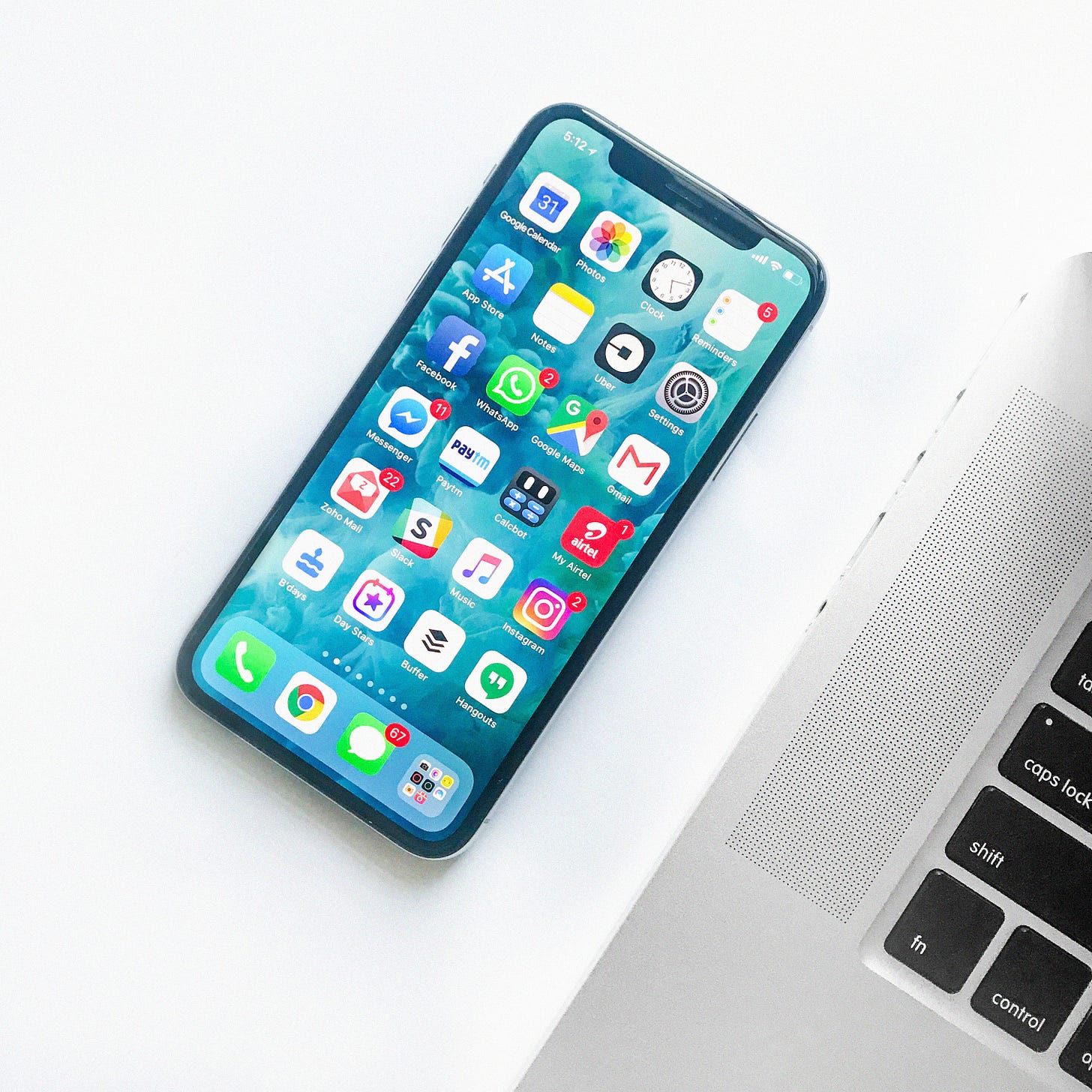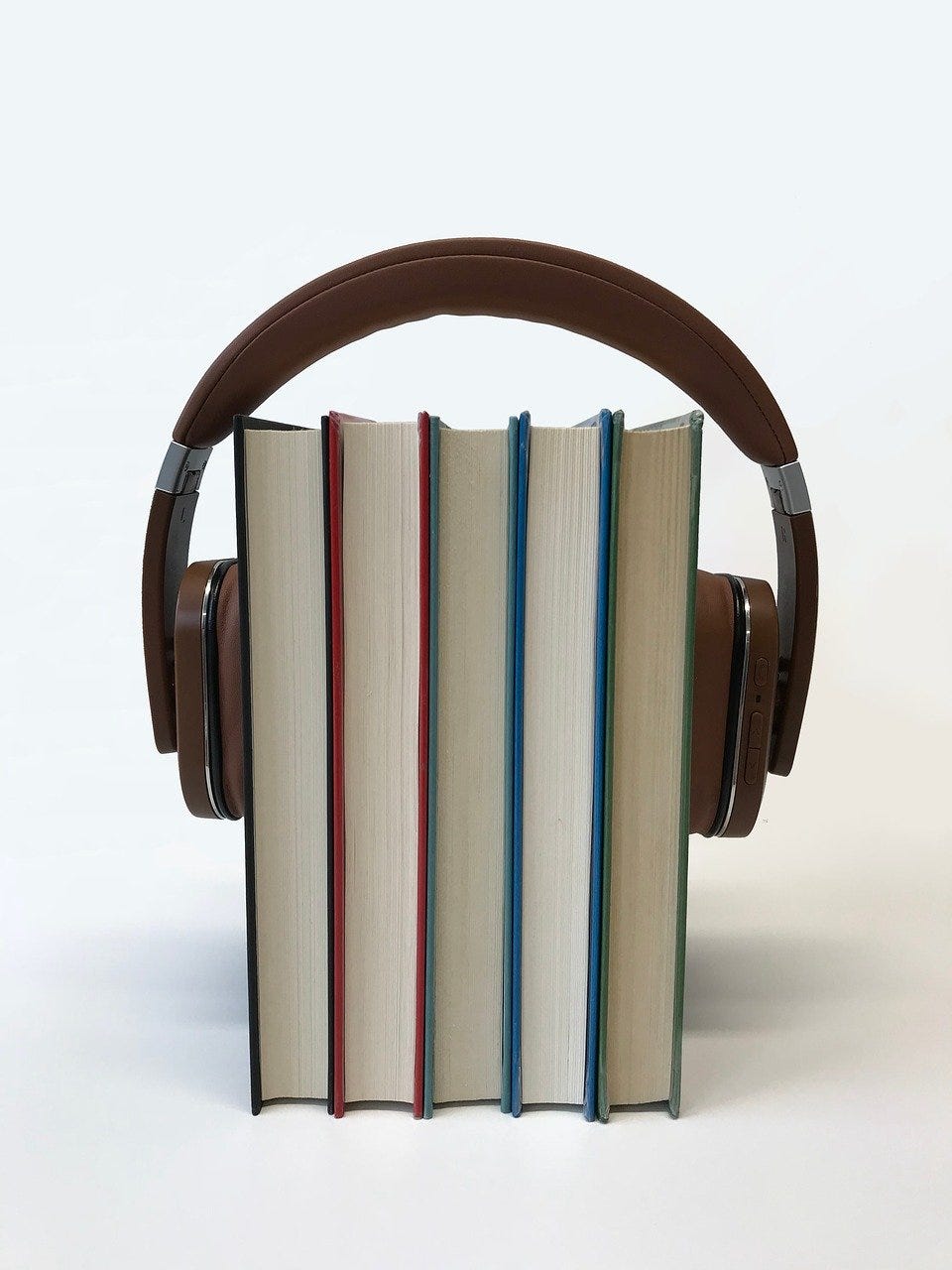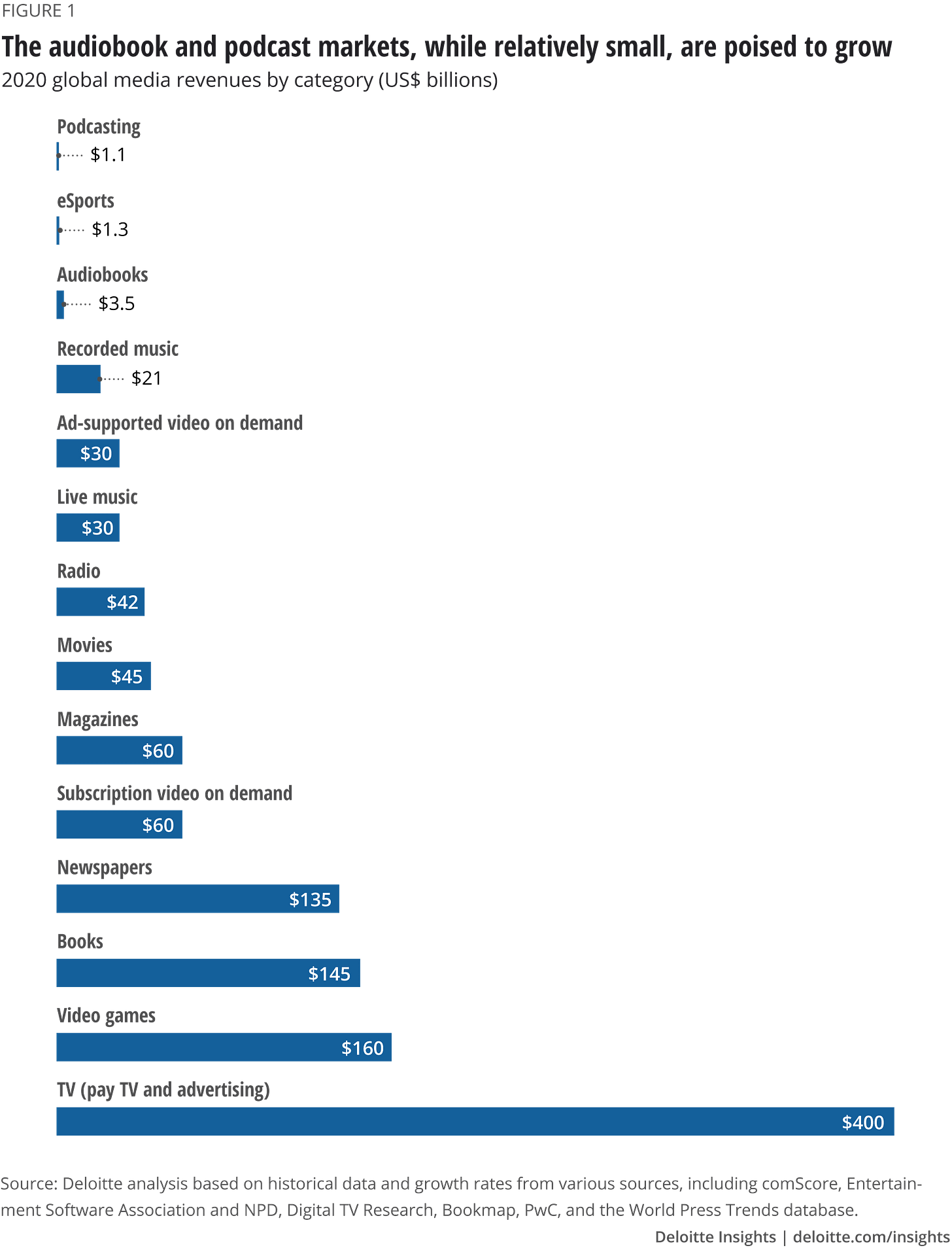What the state of mobile in 2020 tells us about ’mobile web vs. app’ war
State of mobile 2020 & key takeaways. The curious case of audiobooks vs. podcasting and more tech & media news.
Welcome to the FWIW newsletter about tech, media & audio written by David Tvrdon. 🌐 Read it online and consider subscribing.
In this edition
📲 State of mobile 2020 & key takeaways
🎧 Audiobooks vs. podcasting
💬 The rest of the news in short bites
State of Mobile 2020 & takeaways

📷 by Rahul Chakraborty on Unsplash
In January App Annie released its State of Mobile 2020 report and it is worth to come back to it for a while, especially after my piece from last week on digital media trends.
📋 First some useful facts from the report:
204 billion apps - annual worldwide downloads have grown 45% since 2016, this excludes re-installs and app updates
Games make up 72% of app store spend - that is out of $120 billion in 2019; China is basically unmatched in mobile spending, making up 40% of global spend
3 hours 40 minute per day - average daily hours spent per device on mobile
Subscriptions rule the non-gaming apps - top 250 non-gaming apps (in the US on iOS) have driven revenue primarily with in-app subscriptions - top three: Tinder, Netflix, Tencent Video

Gen Z (born 1997 - 2012) surpasses Millenials (born 1981 - 1996) - in the US this already happened, the rest of the world should follow soon, and you should be interested in it, because the “Zs” have 60% more sessions than older generations, meaning they use mobile apps much much more
Banking (& other finance apps) & Shopping apps grew significantly - people tend to do just about everything nowadays on their phones; Amazon is the leading retail app choice across Western Europe and North America
25% of Netflix’s iPhone users in the US also used Disney+ - these are numbers from Q4 2019
50% of time spent on mobile is on social media and communication apps
$1,5 billion spent in Health and Fitness apps
Worldwide monthly active users in 2019


Worldwide consumer spend in 2019

🤔 Takeaways
I am old enough to remember a few years back there was a passionate debate online around ‘Mobile Web vs. Mobile App‘. Which way should news publishers go? And not just news publishers. Unsurprisingly, there is no clear winner. Both mobile web and mobile apps usage are on the rise and both accomplish something different.
Let’s take this reasoning, which I really love:
To reach a new audience, choose the mobile website. And if your goal is to engage with already existing customers providing them with a mobile-friendly experience than a mobile app should be of the highest priority.
Here is a chart to explain (by AppAnnie):

If you are building something new, it makes sense to build a great mobile-first web presence and with scaling up adding a mobile app for building loyalty. Or, if you have the money, you can spend $1 billion on advertising your app, as Bytedance did with TikTok.
I have seen executives and small businesses to rush to build an app for their website. Few realize there is not only a much higher initial investment into app development, but you also have to always keep it updated as per Google Play and App Store rules, which tend to release new requirements each year.
So, before planning to develop an app or your business or website, ask first if your site is mobile-friendly or even mobile-first. If not, start there.
Throughout the years I had different opinions on the mobile web vs. app war. Then I realized you need both to have the kind of meaningful interaction on different levels between your business and your customers. And each serves a different purpose.

The curious case of audiobooks vs. podcasts

📷 by sindrehsoereide from Pixabay
Last December Deloitte published its Technology, Media, and Telecommunications Predictions 2020 and inside you can find a lot of useful data. I was struck by the comparison of audiobooks’ and podcasts’ global revenue numbers.
The report says:
Although the United States in 2018 had 60 percent more podcast listeners than audiobook listeners (21 percent of Americans for podcasts versus 13 percent for audiobooks), podcast revenues for that year were roughly 33 percent lower than for audiobooks (US$500 million compared with US$750 million). This means that each audiobook listener generates more than 2.4 times the annual revenue of a podcast listener. And it isn’t just audiobooks that podcasts lag behind when it comes to monetization. In the United Kingdom in 2017, commercial radio generated 2.8 pence of ad spend per hour of listening, while podcasts generated just 0.5 pence.
OK, now look at the data below 📊

You are looking at predictions, those numbers aren’t real yet, but podcasting is expected this year to become a billion-dollar industry worldwide.
Now, back to the point - audiobooks will become three times bigger in terms of revenue, even with half of the userbase podcasts have. Turns out those “few” users are happy to pay $20 to $30 per audiobook or subscribe for $10 per month.
Does podcasting have a monetization problem?
😢 Well, yes. There are several more ways for podcast publishers to earn money compared to audiobook creators. The problem is, audiobooks aren’t free. You have to pay to get them. Podcasts are free to listen to. If publisher X decides to put the shows behind a paywall, I can go to publisher Y with more less the same shows and continue listening for free.
Because there is more podcast than audiobook listeners, with higher CPM ads (more than $5, sometimes even over $15) you should be earning more. Maybe if your podcast is listened to by hundreds of thousands or millions of people. How many shows like that are there? Out of the reported 850.000 podcasts, I would argue less than 3 percent (might be even far less than 1%).
Anyway, in podcasting, you have a few super high earners and the rest, not even a middle category. Now a super niche audiobook will cost the listener almost the same as a global bestseller.
From the perspective of an independent podcast creator, you are left with crowdfunding campaigns, merch, memberships, live events, etc.
💭 Yes, but! One thing the report does not mention, regarding to audio, and some publishers are already experimenting with this, is getting readers to pay for audio versions of their stories.
🤔 Final thoughts: It took mobile a couple of years to get the ad revenue that is equal to time spent (here explained), I think the same will be true for podcasting. I would say podcasts and radio will be similar in development as were mobile vs. newspapers (sorry, radio people).
And as for audiobooks and podcasting, there is a lesson there to build products you can sell. I want to come back to the idea of podcasting as a habit creating exercise which is best done by daily news podcasts. Publishers can build upon this with a premium product, the above mentioned audio versions of articles behind a paywall.
As for independent podcast creators, there is no easy way out. Once podcasting hits the programmatic ads breakpoint, so that anyone can add an audio spot to their podcast and time (and CPM value) will tell us how sustainable programmatic ads for podcasts are. Also, we will know the exact threshold (in overall downloads) how big of an audience you need to create value.

The rest of the news in short bites
💰 How much YouTube pays for a video with 100,000 views? Marko Zlatic, a YouTube creator with 295,000 subscribers, creates videos dedicated to teaching their audiences about personal finance. On average, he earns between $1,300 and $1,500 on a video with 100,000 views. In comparison, Natalie Barbu, a social-media influencer and YouTube creator with 263,000 subscribers, told Business Insider that a video with about 100,000 views earns her between $500 and $1,000. Zlatic revealed his average CPM rate ranges from $20 to $27 per 1,000 views (the average creator earns about $5 per 1,000 views). He said his audience was made up of people from age 20 up to viewers in their mid-50s, a valuable demographic to advertisers. [Business Insider]
🔁 Habit Forming News Products. Forming habits and recurring behavior are key underlying drivers for publishers to build a sustainable subscription business. The research says on average 66 days before automatic behavior is ingrained in our brain. Every publisher has a different approach, but crosswords, other kinds of puzzles, apps, newsletters, and podcasts are among the most common to build a lasting relationship. [Twipe]
⚔️ Signal is ready to fight WhatsApp. The secure messaging app had 2 million users in 2016, today it might have 15 million according to the latest statement. The company is backed by WhatsApp co-founder Brian Acton who left Facebook in 2017 over a conflict with Mark Zuckerberg regarding WhatsApp’s monetization. Signal has been working on features users are used to in other messaging apps, so that it could compete with them. [Wired]
Here is a key paragraph from that article:
Identifying the features mass audiences want isn't so hard. But building even simple-sounding enhancements within Signal's privacy constraints—including a lack of metadata that even WhatsApp doesn't promise–can require significant feats of security engineering, and in some cases actual new research in cryptography.
🛒 Marketplace 100 by a16z. Venture capital firm Andreessen Horowitz introduced a ranking of the largest and fastest-growing consumer-facing marketplace startups and private companies. The index has Airbnb at no.1, followed by Doordash and InstaCart. [Marketplace 100]
According to one of the key takeaways, Airbnb, Doordash, InstaCart, and Postmates account for 76% of gross merchandise volume (GMV); meaning the biggest marketplace companies are big—really big.
The fastest-growing companies are in wholesale, celebrity engagement, food & beverage, streetwear.
📚 #5Recommended is an irregular series, which I want to keep regular. Every Sunday I will create a top 5 list with the best reads of the week. Check out the first edition.
Playlist of the Week: Billions [Apple Music | Spotify]
TV Show of the Week: Billions [Available on Showtime, HBO GO, Amazon Prime]
Catch me on Twitter or LinkedIn. Was this forwarded to you? Subscribe over here👈

